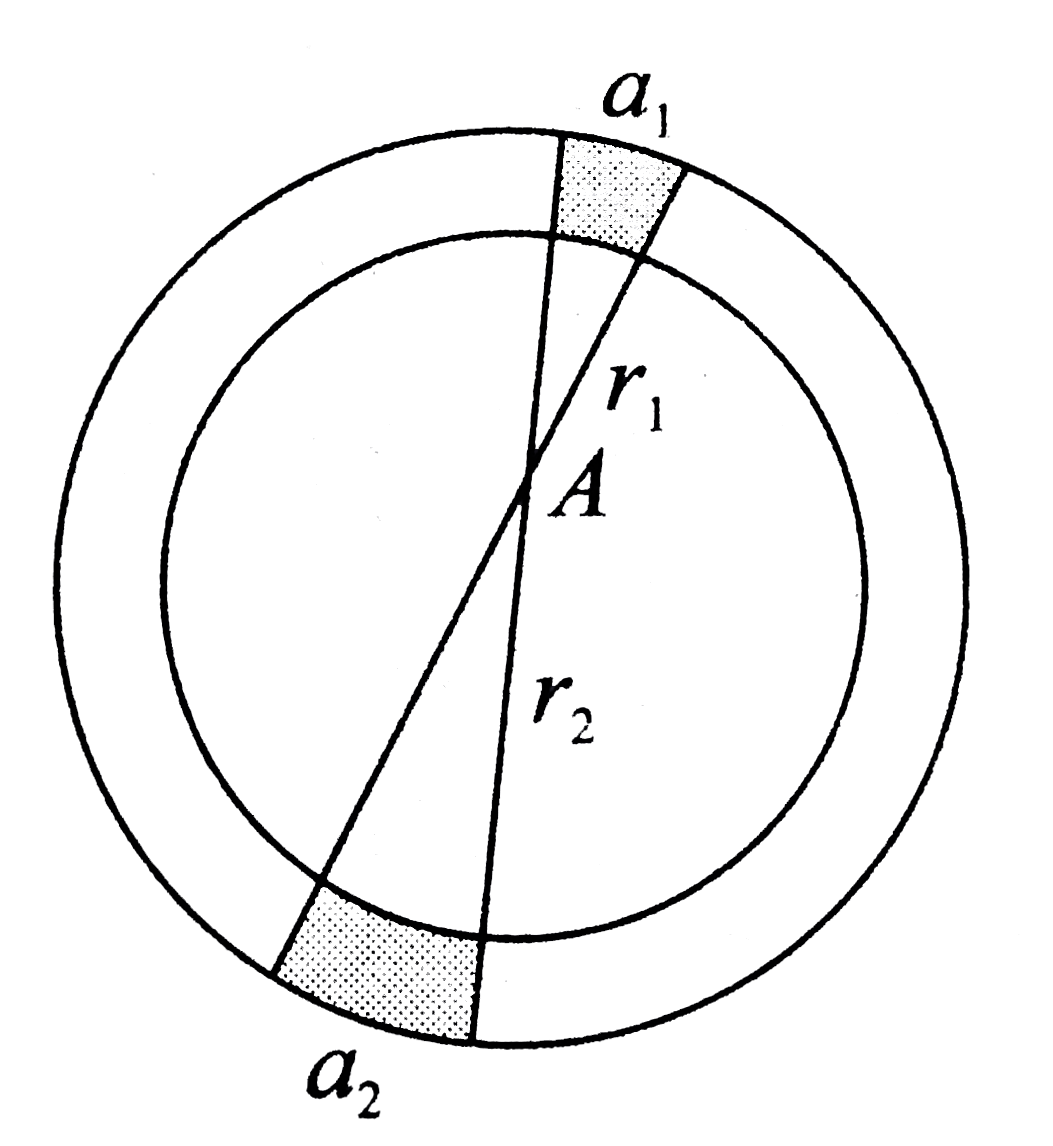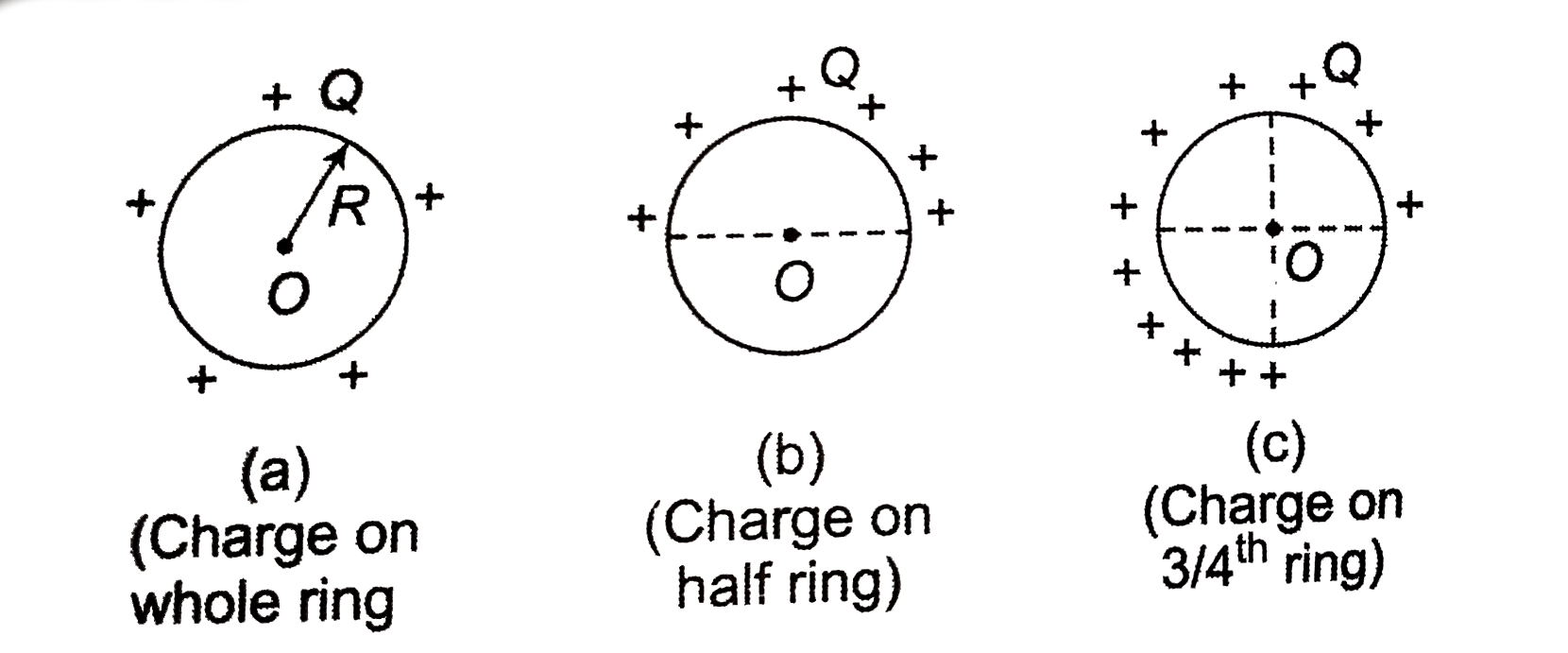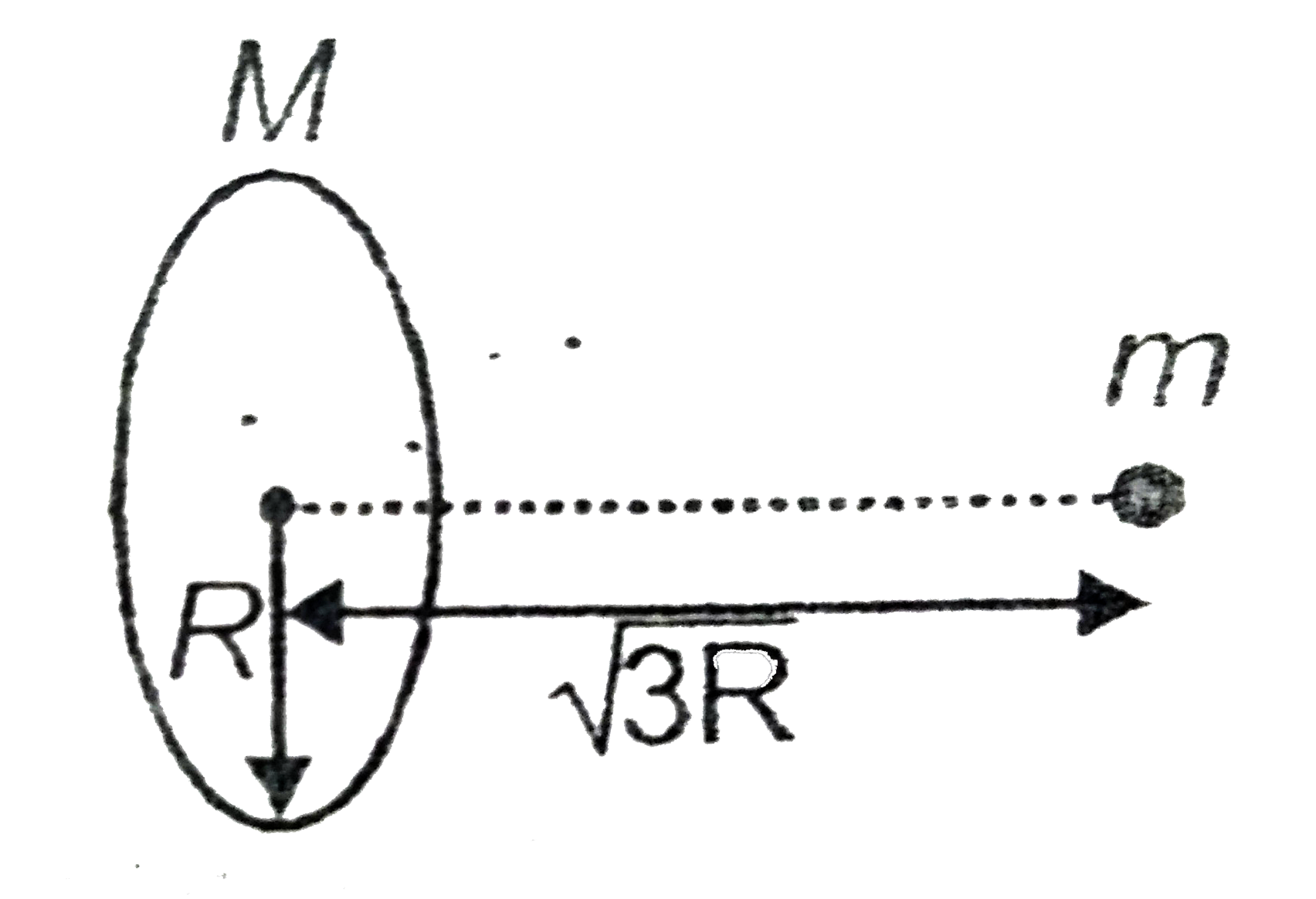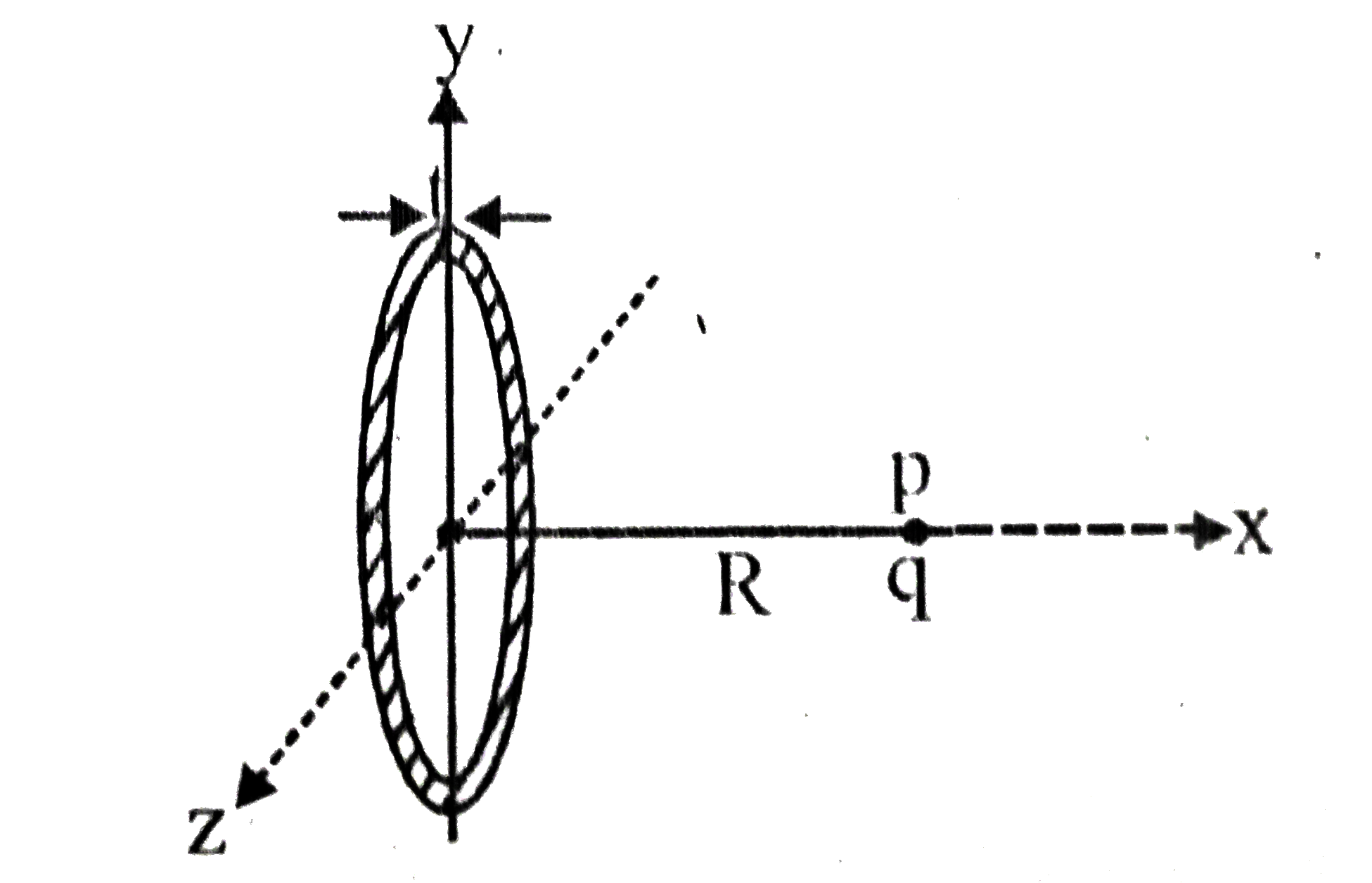A wire having a uniform linear charge density λ is bent in the form of a ring of radius R. Point A as shown in (Fig. 3.145) is in the plane of the ring but not at the center. Two elements of the ring of lengths a1 and a2 subtend very small same angle at point A. they are at distances r1 and r2 from point A, respectively (r2>r1).
 .
.
The ratio of charges of element a1 to that of element a2 is r1/rs.
The element a1 produced greater magnitude of electric field at A than elements a2.
The same elements a1anda2 produce same potential at A
The direction of the net electric field produced by the elements only at A is toward element a2.
The correct Answer is:a.,b.,c.,d.
Charge on a1 is (r1θ)λ
Charge on a2 is (r2θ)λ
ratio of charged is r1/r2
E1(field produced bya1)=K[(r1θ)λ]r21=Kθλr1
E2(field produced bya2)=Kθλr1
Asr2>r1,E1>E2 i.e., net field at A is toward a2
V1K(r1θ)r1=Kθλ
V2=K(r2θ)r1=Kθλ
V1=V2.
Topper's Solved these Questions
- BOOK - CENGAGE PHYSICSCHAPTER - ELECTRIC POTENTIALEXERCISE - Comprehension31videos
ELECTRIC POTENTIAL
- BOOK - CENGAGE PHYSICSCHAPTER - ELECTRIC POTENTIALEXERCISE - Integer5videos
ELECTRIC POTENTIAL
- BOOK - CENGAGE PHYSICSCHAPTER - ELECTRIC POTENTIALEXERCISE - Single Correct56videos
ELECTRIC POTENTIAL
- BOOK - CENGAGE PHYSICSCHAPTER - ELECTRIC FLUX AND GAUSS LAWEXERCISE - MCQ s38videos
ELECTRIC FLUX AND GAUSS LAW
- BOOK - CENGAGE PHYSICSCHAPTER - ELECTRICAL MEASURING INSTRUMENTSEXERCISE - M.C.Q2videos
ELECTRICAL MEASURING INSTRUMENTS
Similar Questions
A charge Q is distributed uniformly on a ring of radius R as shown in the following diagrams. Find the electric potential at the center O of the ring.
(a) View Solution
View SolutionA quarter ring of radius R is having uniform charge density λ. Find the electric field and potential at the centre of the ring.
View Solution
Knowledge Check
- Question 1 - Select One
A half ring of radius r has a linear charge density λ.The potential at the centre of the half ring is
Aλ4εoln0Bλ4π2ε0rCλ4πε0rDλ4πε0r2 - Question 2 - Select One
A rod with linear charge density λ is bent in the shap of circular ring. The electric potential at the centre of the circular ring is
Aλε0Bλ2ε0Cλε0D2λε0 - Question 3 - Select One
An infinitely long wire with linear charge density +λ is bent and the two parts are inclined at angle 30∘ as shown in fig, the electric field at point P is :
 Aλ4π∈0d[(1+√3)ˆi+ˆj]Bλ4π∈0d[(1−√3)ˆi+2ˆj]Cλ4π∈0d[(1+√3)ˆi−2ˆj]Dλ4π∈0d[(1+√3)ˆi+2ˆj]
Aλ4π∈0d[(1+√3)ˆi+ˆj]Bλ4π∈0d[(1−√3)ˆi+2ˆj]Cλ4π∈0d[(1+√3)ˆi−2ˆj]Dλ4π∈0d[(1+√3)ˆi+2ˆj]
Potential on the axis of ring of radius 3R and at distance 4R from centre of ring is (charge on the ring is Q )
View SolutionIn case of pure rolling, what will be the velocity of point A of the ring of radius R?
 View Solution
View SolutionA point particle of mass m is released from a distance √3R along the axis of a fixed ring of mass M and radius R as shown in figure. Find the speed of particle as it passes through the centre of the ring.
 View Solution
View SolutionA charge q is placed at the point P as shown in figure on the axis of the ring of elemental thickness 't' and radius R then flux through the ring is :-
 View Solution
View SolutionThe linear charge density on a dielectric ring of radius R vanes with θ as λ=λ0cosθ/2, where λ0 is constant. Find the potential at the center O of the ring [in volt].
View Solution
